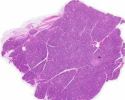|
General and Systemic Histopathology, C601&C602 Liver, Gallbladder and Pancreatic Diseases As we will see in this unit, the liver is subject to many types of injury. Additionally, many systemic diseases have a liver component and sometimes it's hard to know what might have started a particular pathological condition. We will be studying examples of infectious, vascular, nutritional, obstructive, neoplastic and iatrogenic injury of the liver. It's going to be very important to know the micro architecture of the liver. The liver is an organ that has a remarkable capacity for regeneration, assuming the underlying reticular (lobular) framework is intact. Unfortunately, in the case of chronic and ongoing injury, complicated by loss of the basic reticular architecture, the drive to repair substantially misses the mark. In this connection, we are going to look at a number of examples and causes of cirrhosis and it's long-term complications. Additionally, the study of hepatitis is going to be very important, but don't make the mistake of thinking that all cases of hepatitis are viral in nature, or for that matter have a microbiological etiology. Many medications cause liver cell injury that can lead to overt hepatitis. And, as I am sure everyone knows, ethanol has rather marked liver toxic properties. One of the leading causes of acute hepatitis is acute alcohol injury. We will see others as well. As with all of the laboratory
units in this course, we are not able to look at examples of every disease
of the an organ system. We don't have the time nor is it necessary. Still,
the cases presented here should give you a good overview of the major
processes and probable outcomes of most forms of liver, gallbladder and
pancreatic injury. Good luck.
Previous Laboratory | Next Laboratory | Table of Contents
Mark Braun, MD
braunm@indiana.edu
|




























